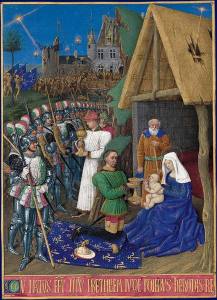 “O star of wonder, star of night,
“O star of wonder, star of night,
Star with royal beauty bright,
Westward leading, still proceeding,
Guide us to thy perfect light.”
It may be the most famous star in history. But was it real? Mentioned just once in the gospel of Matthew, the “Star of Bethlehem”, or the “Christmas Star”, may have guided three wise men from the East in search of a newborn king. A few words written on a scroll two thousand years ago isn’t much to go on, but astronomers have a few ideas that may explain the apparition of a star near the time of the birth of Jesus.
[Read more…] about The Science of the Christmas Star


